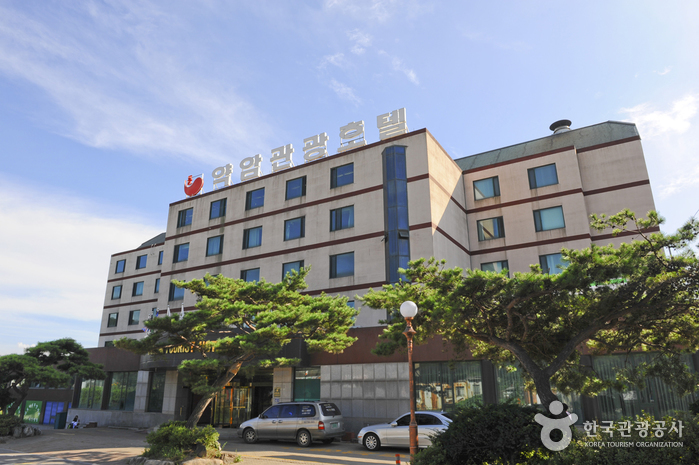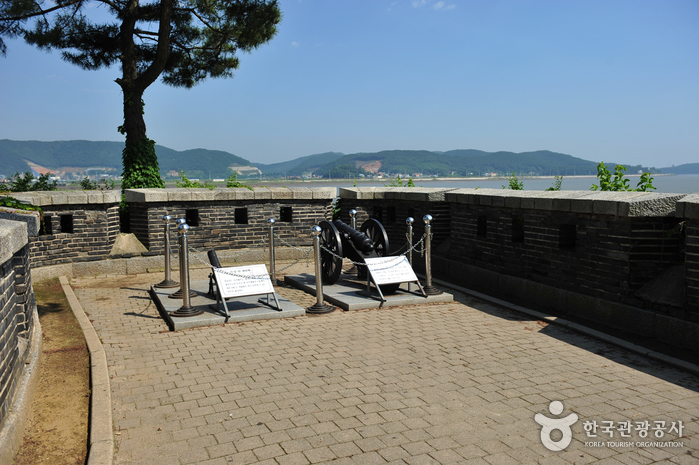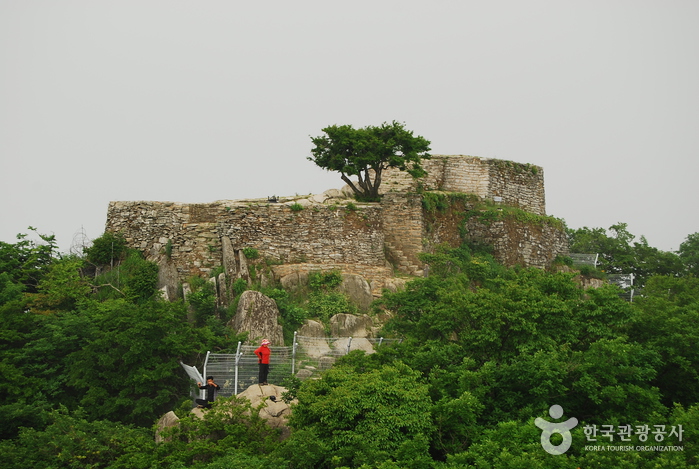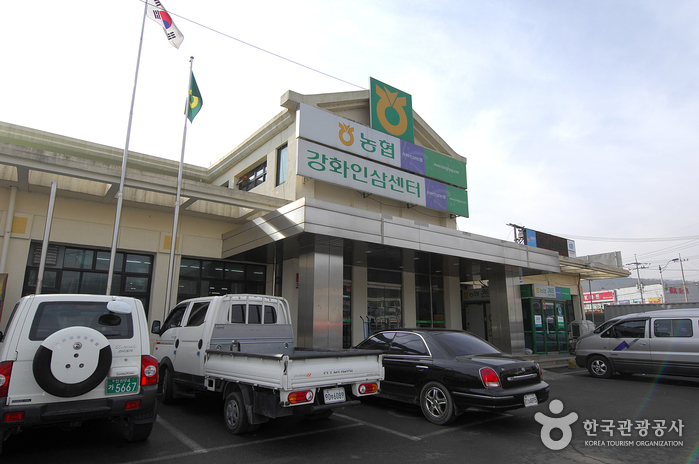Yagam Hongyeomcheon Tourist Hotel (약암홍염천관광호텔)
7.1 Km 10486 2020-04-15
965-7, Yagam-ro, Gimpo-si, Gyeonggi-do
+82-31-989-7000
Yagam Hongyeomcheon Tourist Hotel in Gimpo offers 71 guest rooms and a variety of amenities, including the Mammoth Tub, able to accommodate over 1,000 guests at once. Being near the city, many tourists from Seoul and Incheon come to relax during the weekends. The Hongyeomocheon waters are famous for healing the eye disease of Joseon dynasty King Cheol-Jong. The water come from 460 meters underground. It is clear, clean, and contains great iron minerals and the salt content is one tenth of the ocean water. The water color turns red after about ten minutes of exposure to the air.
Hamheodongcheon Campground (함허동천야영장)
7.2 Km 124030 2024-02-15
13 Haeannam-ro 1196beon-gil, Hwado-myeon, Ganghwa-gun, Incheon
032-930-7066
Hamheodongcheon Campground is a camping site nestled in the Hamheodongcheon valley on the northern slope of Manisan Mountain in Ganghwa-do, inaugurated in 1987. Enveloped by lush forests, it provides a picturesque setting and is especially favored as a summer retreat destination. The first campground accommodates electricity usage and operates through an internet reservation system, whereas the second to fourth campgrounds operate on a first-come, first-served basis without prior reservations.
[Ganghwa Nadeul-gil Course 2] Homeland Fortification Trail ([강화 나들길 제2코스] 호국돈대길)
7.5 Km 23046 2021-08-11
24, Cheonghadong-gil, Ganghwa-gun, Incheon
+82-32-934-1906
The Ganghwa Nadeul-gil Trails are a collection of walking paths along the coast of Ganghwa Island that connect the watchtowers and and walls of Ganghwasanseong Fortress, as well as royal tombs and other historically significant sites from the Goryeo dynasty that dot the island.
[Ganghwa Nadeul-gil Course 2] Homeland Fortification Trail
Course 2 stretches over a 17 kilometer area between Gapgotdon Watchtower and Chojijin Fort. This trail showcases the history of the island and the changes that happened before and after the opening of the port. The course follows a coastal road that is particularly beautiful in spring and fall.
Gapgotdon Watchtower (갑곶돈대)
7.6 Km 20624 2021-01-18
18, Haeandong-ro 1366beon-gil, Ganghwa-gun, Incheon
+82-32-930-7077
Gapgotdon Watchtower was built to protect the Ganghwa Straits from invasion when the Goryeo Kingdom moved their capital to Ganghwado Island. The fortified area served as a highly strategic location for the Goryeo Kingdom, and had endured multiple invasions by the Mongolian troops between 1232 and 1270.
The watchtower was fortified in the Joseon dynasty by King Sukjong in 1679 and had once fallen during the French campaign against Korea in 1866. In 1977, the site was restored to its original form. The cannons exhibited at the current site were made during the Joseon dynasty to attack outside invaders from sea.
Chamseongdan Altar (강화 참성단)
7.8 Km 22386 2020-06-29
Heungwang-ri, Ganghwa-gun, Incheon
+82-32-930-4571
Located on the northside of Manisan Mountain peak, Chamseongdan Altar is where Dangun (founder of Korea) is said to have offered sacrifices to the heavens. The story of Dangun reads that he made sacrifices over 4,000 years ago, making this relic a historical treasure.
Chamseongdan was renovated in 1270 under Goryeo Wonjong’s and after being renovated several more times. To this day it has remained the same way and kept the same appearance. Chamseongdan is a natural stone 5 meters in x_height, circular in shape at the bottom and rectangular at the top. Because it is in the middle of Baekdusan Mountain and Hallasan Mountain, you can see the islands of the West sea and the inland scenery. It is symbolically a very important place. It is said that in the past, the kings of Goguryeo, Baekje, and Silla Kingdoms all offered sacrifices to the heavens here. This form of ceremonial sacrificing continued prevailed until the Joseon Period (1392~1910). Visitors can see from scattered relics how Korea’s ancestors revered and feared the heavens. Even now, on Gaecheonjeol Day, Koreans offer sacrifices to Dangun here, and for national athletic events, a sacred flame for the games is ignited here.
Manisan Mountain is 495m above sea level, which makes it the highest mountain in Ganghwa. The entire area was designated as a National Tour Site in 1977. Climb to the summit and you can see the entire Gyeonggi area. The path leading up to Chamseongdan especially has a wonderful view of the mountain and the sea, and is a favorite of the climbers.
Ganghwa Ginseng Center (강화 인삼센터)
7.9 Km 37797 2021-05-07
335, Ganghwa-daero, Ganghwa-gun, Incheon
+82-10-9314-3348
The cultivation of Ganghwa ginseng began during the era of King Gojong (A.D. 1232) of the Goryeo dynasty. In 1920, Ganghwado Island was designated a special district for ginseng cultivation. At the onset of the Korean War (1950-1953), the people of Gaeseong, the birthplace of ginseng cultivation, took refuge on Ganghwado Island and began to cultivate ginseng on a large scale, which was the beginning of the production of the famous 6-year-old root of ginseng.
Ganghwado Island has the optimal environment for ginseng cultivation with clay soil, sandy loam, and a cool climate condition influenced by coastal winds. The thick root of Ganghwa ginseng does not have any inside cavity or white interior. This is how Ganghwa became a leading producer of the 6-year-old root, which has a high rate of red ginseng extract, cheonji.
Ganghwa Ginseng Center handles quality ginseng guaranteed in its cultivation, processing, and distribution, owing to the utmost care exerted to provide safe and reliable products.
Ganghwa Ginseng Cooperative [Tax Refund Shop] (강화인삼협동조합)
8.0 Km 0 2024-04-27
335, Ganghwa-daero, Ganghwa-eup, Ganghwa-gun, Incheon
-
Daemyeongheon House [Korea Quality] / 남문한옥 대명헌 [한국관광 품질인증/Korea Quality]
8.2 Km 0 2021-03-25
7, Nammunan-gil, Ganghwa-gun, Incheon
Daemyeongheon House is a modern hanok building integrating elements of European architecture. Its interior features design that cannot be found in traditional hanok, such as English herringbone-style floorboards and stained glasses. The kitchen has a well-preserved domestic furnace and items in the style of 1930s, exemplifying the unique atmosphere of this modern hanok. Daemyeongheon is also famous for its connection to Kim Gu (pen-name: Baekbeom), a prominent independence activist: When Kim fled to Ganghwado Island about a hundred years ago, Daemyeongheon was the place he stayed for about three months, and also a place where he presided over a village school. Traces of Kim’s stay can still be found in the building.
Daemyeongheon House is made up of three buildings of the main building, a detached building, and an annex. The area that the guests stay in is the annex. The annex has three rooms, a central wooden-floored hall (daecheong), raised floor (numaru), balcony (jjongmaru), and kitchen. The restroom, which is also fitted with a shower booth, is located outside the building. Since reservations are offered to only one group per day, visitors have the house to themselves during their stay. Because of the building’s unique characteristics, guests are prohibited from cooking indoors; instead, guests are provided with a complimentary breakfast, such as bread, tea, coffee, and fruit.
Paid programs on site include tea ceremony, azalea craft on traditional Korean paper, retro-style clothing rental, and photography. Guided tours are offered twice per day at 14:00 and 16:00. The tour takes about 0.5–1 hr and requires a fee of KRW 10,000 (including tea). However, visitors should check the date before their visit, as the guided tour is not available when there are any guests staying in the house.
[Ganghwa Nadeul-gil Course 8] Bird Watching Trail ([강화 나들길 제8코스] 철새 보러 가는 길)
8.3 Km 23896 2022-11-11
24, Cheonghadong-gil, Ganghwa-gun, Incheon
+82-32-934-1906
The Ganghwa Nadeul-gil Trails are a collection of walking paths along the coast of Ganghwa Island that connect the watchtowers and and walls of Ganghwasanseong Fortress, as well as royal tombs and other historically significant sites from the Goryeo dynasty that dot the island.
[Ganghwa Nadeul-gil Course 8] Bird Watching Trail
Course 8 stretches over a 17.2 kilometer area between Chojijin Fort and Bunoridondae Fortification. Set along the southern coast of Ganghwado Island, this trail showcases the island's natural beauty and history. It is especially popular in summer when the cool ocean breeze blows and in winter when the migratory birds settle in the mud flats.
[Ganghwa Nadeul-gil Course 7] Setting Sun Trail ([강화 나들길 제7코스] 낙조보러 가는 길)
8.3 Km 23723 2022-12-29
24, Cheonghadong-gil, Ganghwa-gun, Incheon
+82-32-934-1906
The Ganghwa Nadeul-gil Trails are a collection of walking paths along the coast of Ganghwa Island that connect the watchtowers and and walls of Ganghwasanseong Fortress, as well as royal tombs and other historically significant sites from the Goryeo dynasty that dot the island.
[Ganghwa Nadeul-gil Course 7] Setting Sun Trail
Course 7 stretches over a 20.8-kilometer-long loop from Hwado Parking Lot to Mud Flat Research Center and back. The trail leads through a tunnel of green leaves before opening out onto the mud flat. The mud flat is one of the world's top five mud flats and presents a beautiful view of the ocean and mountains. Bird-watchers will love the chance to see migratory birds fly through each winter.


![[Ganghwa Nadeul-gil Course 2] Homeland Fortification Trail ([강화 나들길 제2코스] 호국돈대길)](http://tong.visitkorea.or.kr/cms/resource/05/1895205_image2_1.jpg)



![Daemyeongheon House [Korea Quality] / 남문한옥 대명헌 [한국관광 품질인증/Korea Quality]](http://tong.visitkorea.or.kr/cms/resource/12/2707012_image2_1.jpg)
![[Ganghwa Nadeul-gil Course 8] Bird Watching Trail ([강화 나들길 제8코스] 철새 보러 가는 길)](http://tong.visitkorea.or.kr/cms/resource/32/1895232_image2_1.jpg)
![[Ganghwa Nadeul-gil Course 7] Setting Sun Trail ([강화 나들길 제7코스] 낙조보러 가는 길)](http://tong.visitkorea.or.kr/cms/resource/22/1895222_image2_1.jpg)
 English
English
 한국어
한국어 日本語
日本語 中文(简体)
中文(简体) Deutsch
Deutsch Français
Français Español
Español Русский
Русский